Copyright © 1997 by Annual Reviews. All rights reserved
| Annu. Rev. Astron. Astrophys. 1997. 35:
607-36 Copyright © 1997 by Annual Reviews. All rights reserved |
Flux-density limited radio sky surveys at short centimeter (e.g. 6 cm) wavelengths yield roughly equal numbers of steep-spectrum extended double-lobed sources and flat-spectrum objects that are unresolved on an arcsecond scale. Among these radio-loud objects, the flat-spectrum sources typically can be associated with blazars and quasars, whereas the steep-spectrum sources tend to be FR I or FR II radio galaxies. Parsec-scale jets are found in all types of powerful radio sources, although they occur predominantly in elliptical galaxies rather than in spirals (e.g. Seyferts, Liners). A classification based on overall radio size and morphology has become possible through VLBI surveys, which yield several major classes with distinct characteristics (see Wilkinson 1995, Pearson 1996): (a) luminous core-dominated flat-spectrum sources, (b) powerful double-lobed radio galaxies with hotspots (Fanaroff-Riley class II, FR II), (c) weaker double-lobed radio galaxies without leading hot spots (FR I types), (d) compact steep-spectrum sources (CSS sources), and (e) compact symmetric objects (CSOs). Figure 1 shows representative examples of compact source structure typically found in high-frequency VLBI surveys (e.g. the 15 GHz survey of JA Zensus, KI Kellermann, RC Vermeulen & MH Cohen, in preparation). A range of astronomical phenomena has been attributed in part to gravitational lensing, and this effect has been suggested to be responsible for some of the distinguishing properties of AGN. Several of the known lens systems have VLBI jets, and their study reflects on the physics of AGN: For example, it can provide limits on source size (see Hewitt 1995).
 |
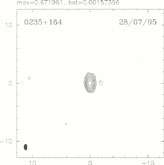 |
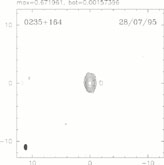 |
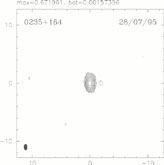 |
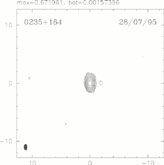 |
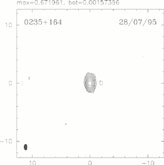 |
Figure 1. Examples of VLBI structures of compact sources at 15 GHz (from JA Zensus, KI Kellerman, RC Vermeulen & MH Cohen, in preparation). |
|